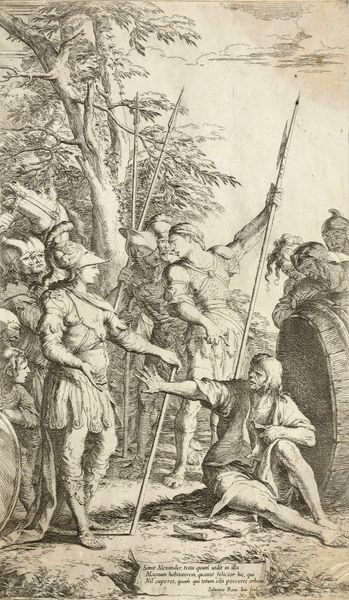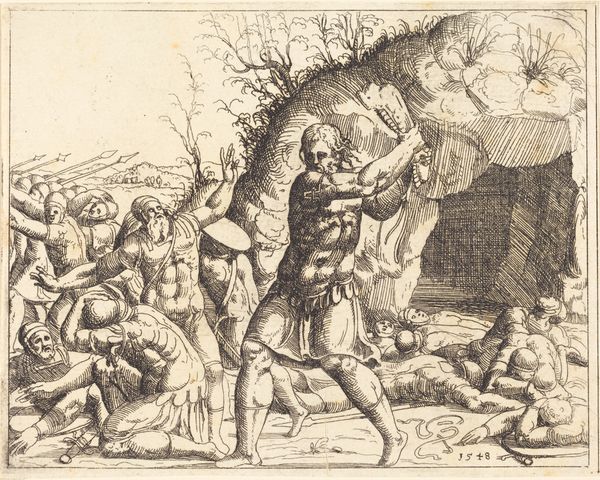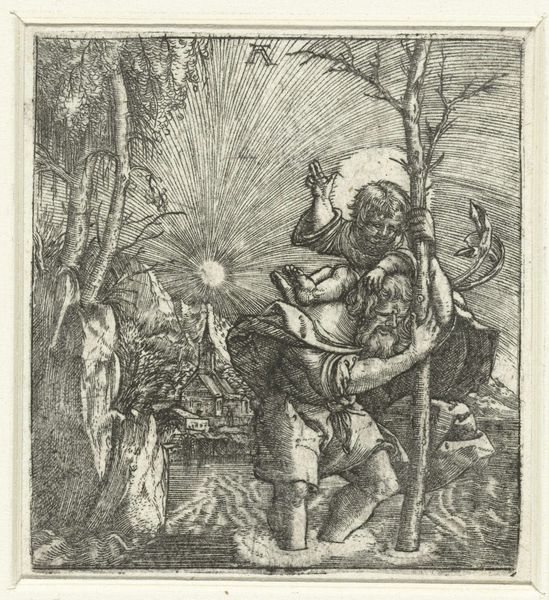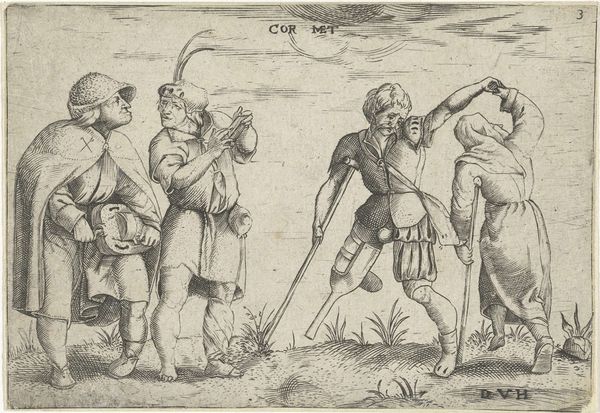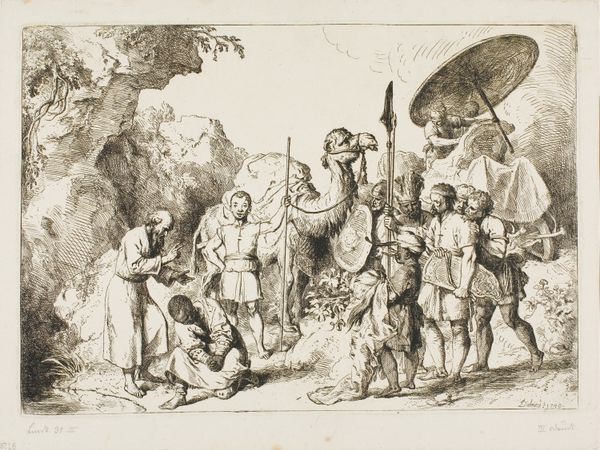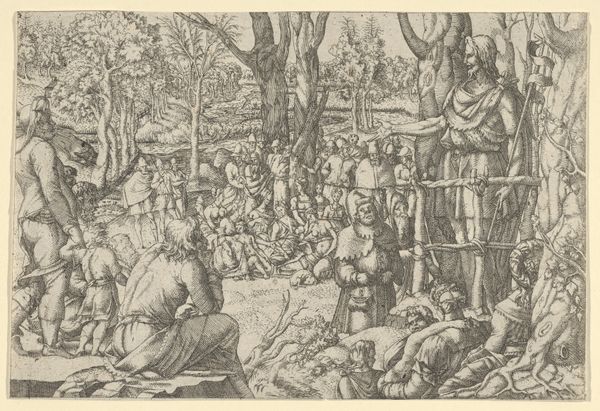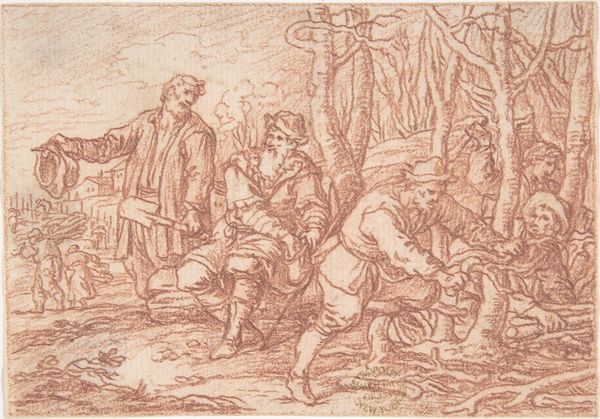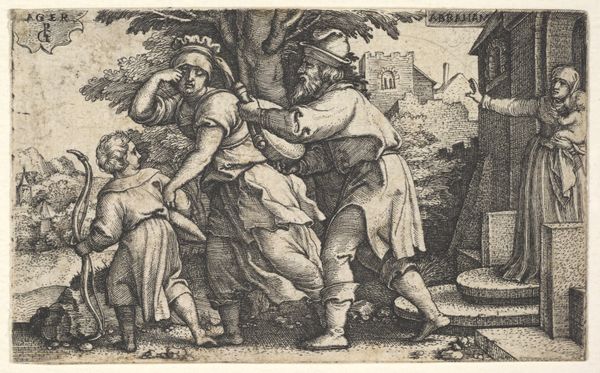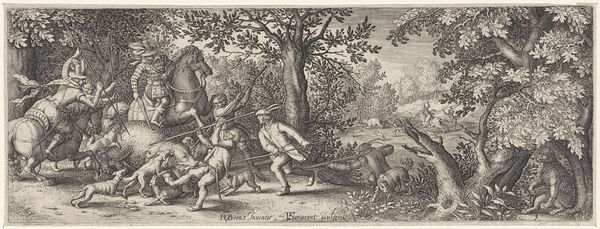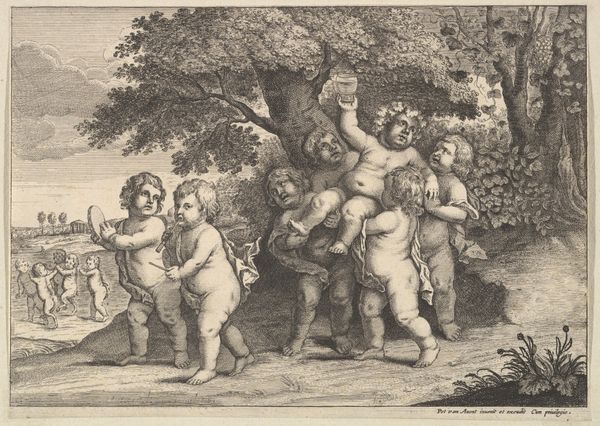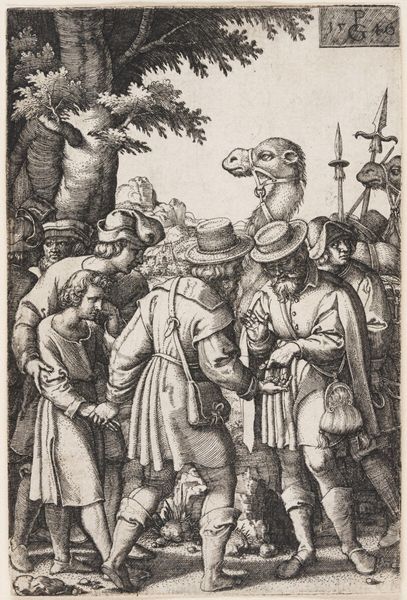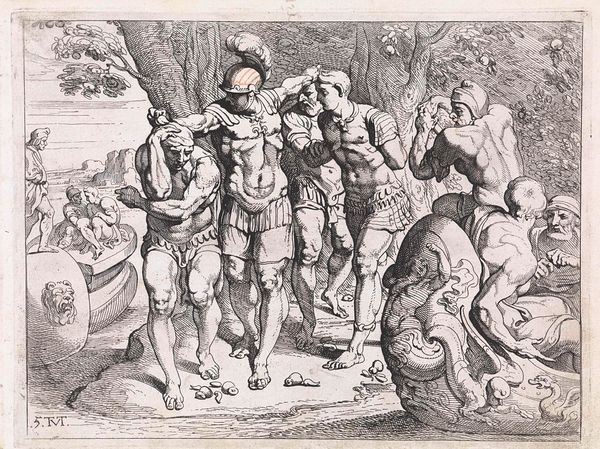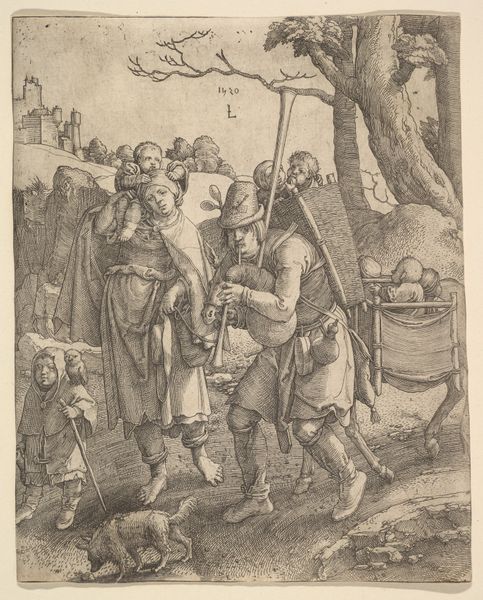
engraving
#
narrative-art
#
dutch-golden-age
#
landscape
#
figuration
#
genre-painting
#
engraving
Dimensions: height 264 mm, width 350 mm
Copyright: Rijks Museum: Open Domain
Curator: Let’s examine "The Bird-Nester," an engraving made in 1606 by Hessel Gerritsz, here in the Rijksmuseum collection. It’s a rather detailed, busy scene. Editor: Immediately, the darkness strikes me. It's dense and layered; the contrast throws the central group forward in a dramatic way, almost like a stage setting. Curator: Note the stark chiaroscuro that Hessel creates solely through the density and direction of his engraved lines. It highlights forms and guides the eye across the composition, doesn't it? Consider how he uses hatching to build up tone, a complex dance of horizontals and diagonals. Editor: Right, it’s so fascinating how he uses this network of lines to establish so much depth and character. And the thematic layers are intense. I see youthful recklessness balanced against adult concern. The boy stealing eggs embodies a transgression against the natural order, a primal taking, which brings to mind concepts of original sin and loss of innocence. Curator: Yes, we could say this image works as an allegory, but not overtly didactic. Gerritsz, the engraver, presents various characters engaged in actions around a single subject: stealing birds’ eggs. The placement of the figures and the details are remarkable for such a scene. Observe the careful balance of vertical and diagonal lines that structure the scene and give stability. The curve of the tree boughs against the straight line of the staff, the angle of the pointer... Editor: It almost transforms the image into a morality play, a reflection on temptation and consequence. Look at how the seated figures seem oblivious, lost in their own small world while this drama unfolds nearby. Their insularity adds another layer, as if commenting on society's blind eye. Curator: Indeed, this contrast provides both visual interest and moral ambiguity, it's a testament to Gerritsz's craft. The composition is sophisticated but it invites the eye to move between elements while maintaining clarity within this very complex arrangement. Editor: The visual structure certainly bolsters the symbolic resonance; it adds potency to our cultural interpretation. This is one engraving I will think about a great deal! Curator: Yes, Gerritsz compels us to look closely at the interplay between line, form, and content, which gives us the ability to read our symbols into them.
Comments
rijksmuseum about 2 years ago
⋮
This print illustrates a proverb: ‘He who knows where the nest is has the knowledge, but he who robs it has the nest.’ Like the adjacent drawing, the depiction could have an amorous charge, for in the distance at the left two anglers empty a fish trap. Perhaps the saying can also be interpreted more broadly: ‘nothing ventured, nothing gained.’
Join the conversation
Join millions of artists and users on Artera today and experience the ultimate creative platform.
